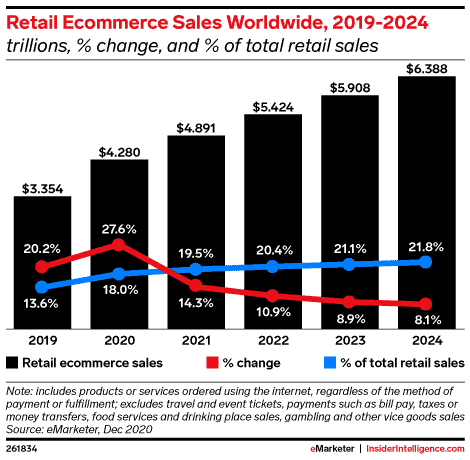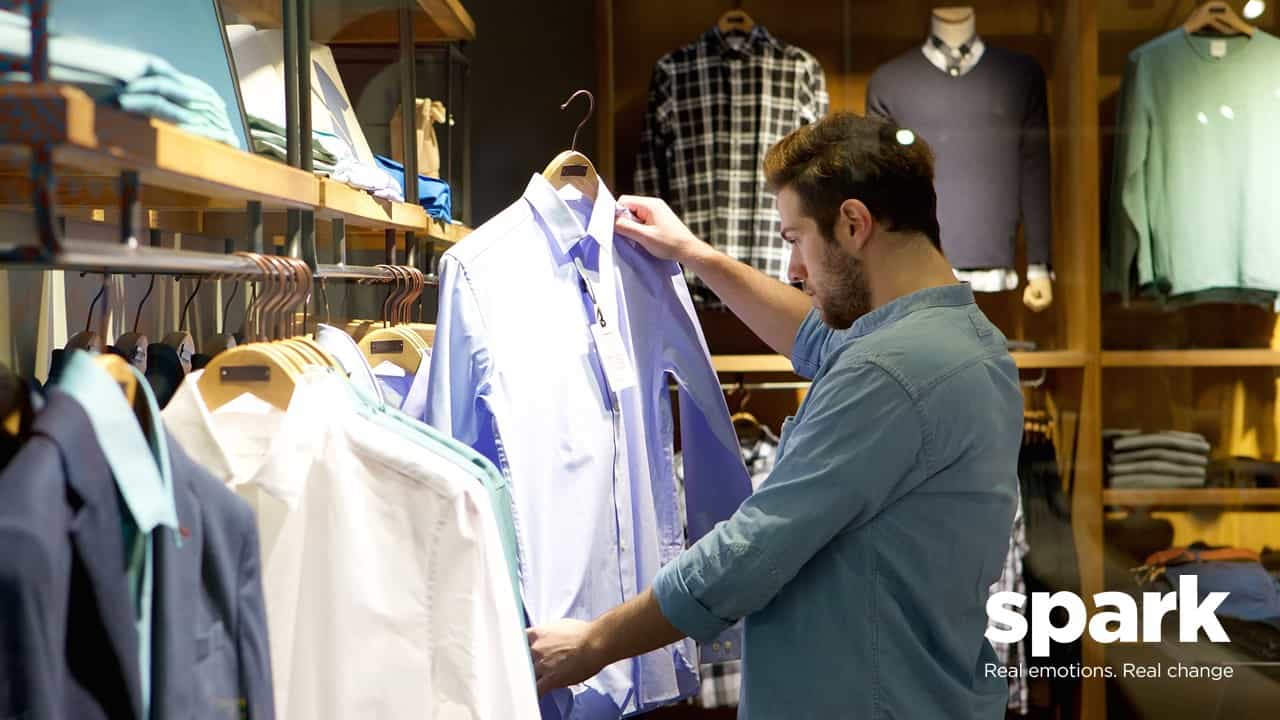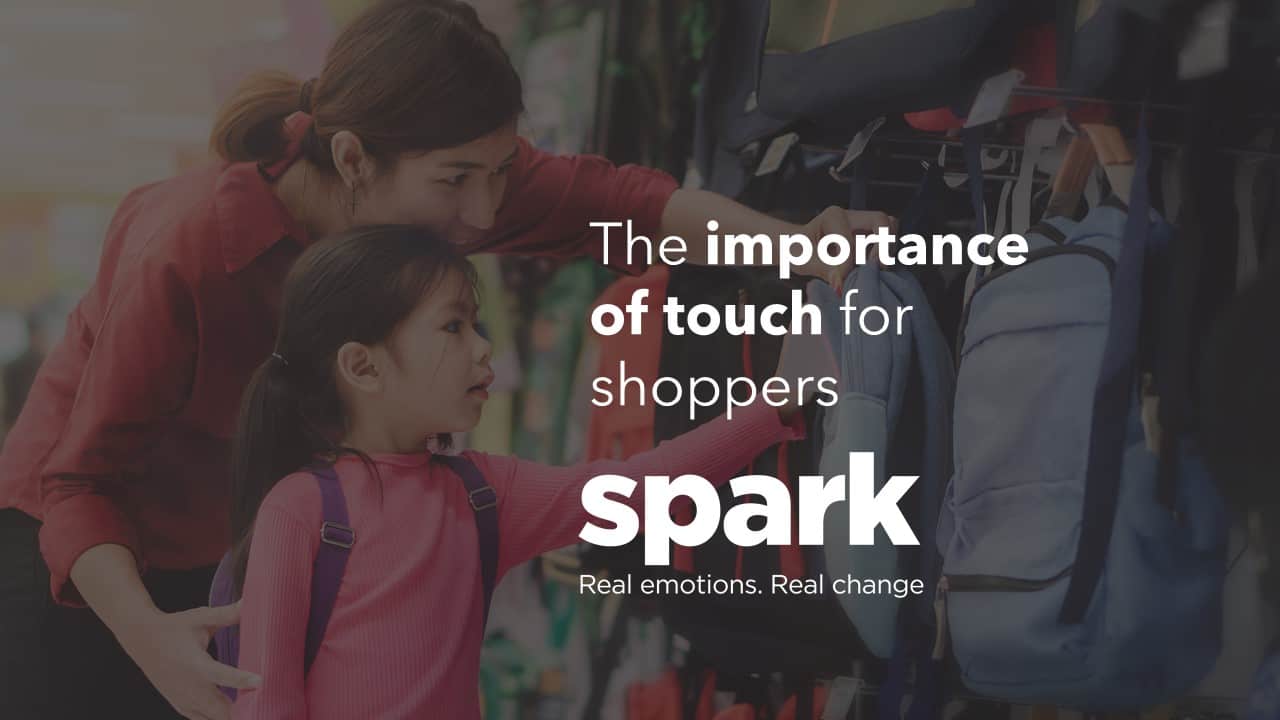Vision has been one of the most studied scientific areas in the history of consumer psychology. However, in the past 20 years, there has been an increasing interest in how other senses, like touch, can impact consumer decision making, product evaluation and attention.
Quite often we are unaware of the importance of touch even though it drives a large majority of our daily activities e.g. from eating and walking to cuddling and driving. The ‘hidden’ power of touch in terms of having the capacity to alter the perceptions of consumers and drive our behaviour and emotions has been proven in several scientific studies.
Ecommerce is still quite far behind physical retail but is growing
In the context of touch driving behaviour, consumers buy something nearly every day whether that’s our lunch, a new watch, train ticket or newspaper. In 2020, online shopping accounted for only 18% of global retail sales, showing just how important touch is in purchases around the world.

Most of the time we buy physical objects as oppose to images or sounds but even when a product can be purchased in a ‘virtual’ or not tangible form, such as an e-book downloaded from the internet, we still miss the pleasure of holding a physical book in our hands.
The importance of touch to evaluate products for shoppers
Findings from a study carried out by McCabe and Nowlis (2012) suggest that consumers prefer to shop with retailers who allow for tactile interaction with their products, especially where evaluation is important e.g. clothing, headphones etc. At one point the supermarket group Asda removed the plastic wrapping from various toilet tissue brands so that shoppers could compare textures, which resulted in a significant increase in sales.
Another study by Ackerman et al (2010) demonstrated the direct influence tactile information can have on our buying behaviour. Participants were asked to sit on a hard wooden chair or a soft cushioned chair, they were tasked to imagine shopping for a new car worth $16,500 and to negotiate a cheaper price. Findings revealed that participants who sat on the hard chair deviated the least from their first rejected offer. This study suggests that the tactile context of a situation influences human behaviour even when it has no relevance to the performed action.

Touch increases the valuation of a product for shoppers
Whilst we understand that people touch to obtain information about a product, what may seem less obvious is that enabling customers to touch a product also increases the valuation and the price they are willing to pay for a product.
The product value increases once the person takes ownership of it – the endowment effect. Ownership essentially means control, and if a shopper can control something through touch, they are more likely to feel ownership which in turn increases how much they are willing to pay for a product.
Strong product design will drive conversion with touch
Shopper research conducted by Spark Emotions found that when shoppers were shown hose guns, they liked to unconsciously ‘fire the gun’ before buying. By allowing customers to do this, they saw conversion to purchase increase, click here to read the case study.
The desire to fire the gun can be explained by the concept of affordances proposed by James Gibson (1979), who suggested that if a product does not represent features that trigger specific actions, then individuals are less likely to interact with it. Good product designs are intuitive, with the hose gun you can immediately see that there is a handle that you can grasp.
In summary
This growing body of research has highlighted that touch is very powerful, and influences our decisions, opinions, and behaviours, even on a subconscious level. As a result of this realisation retailers, advertisers and manufacturers are increasingly valuing the importance and complexity of this sense.
How can we help
At Spark Emotions, we have over 20 years of experience conducting shopper research around the globe. Our team of consumer psychologists and industry experts are able to translate shopper behaviour, i.e. the importance of touch, to help identify what it really means. We provide actionable insights, that gives our clients clear guidance on how to implement changes to help drive increased conversion in-store.
If you are interested to find out how you can tap into your shoppers’ behaviour to improve the shopping experience in-store, enter your details below.
Enter your details and one of the team will be in touch
 Written by Binna Chopra, Research Manager at Spark Emotions
Written by Binna Chopra, Research Manager at Spark Emotions
If you have any questions, feel free to reach out to Binna via email binna.chopra@sparkemotions.com or connect with her on LinkedIn






2 thoughts on “The importance of touch for shoppers”
Comments are closed.